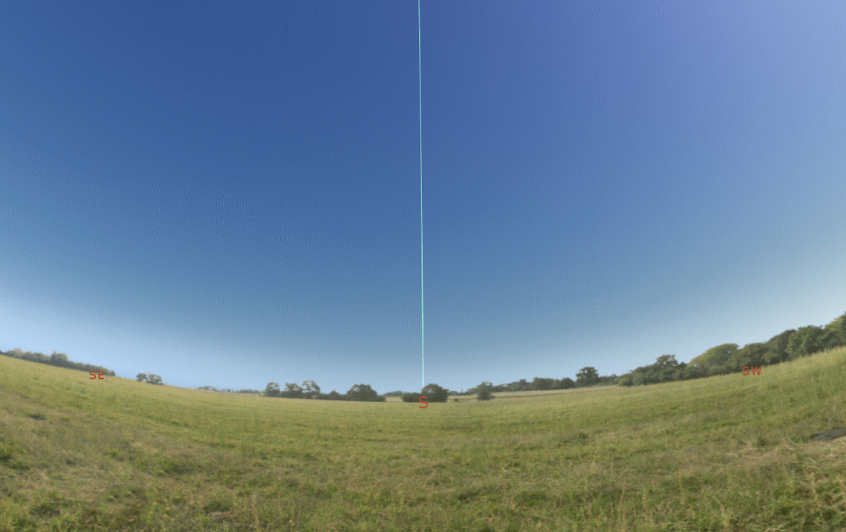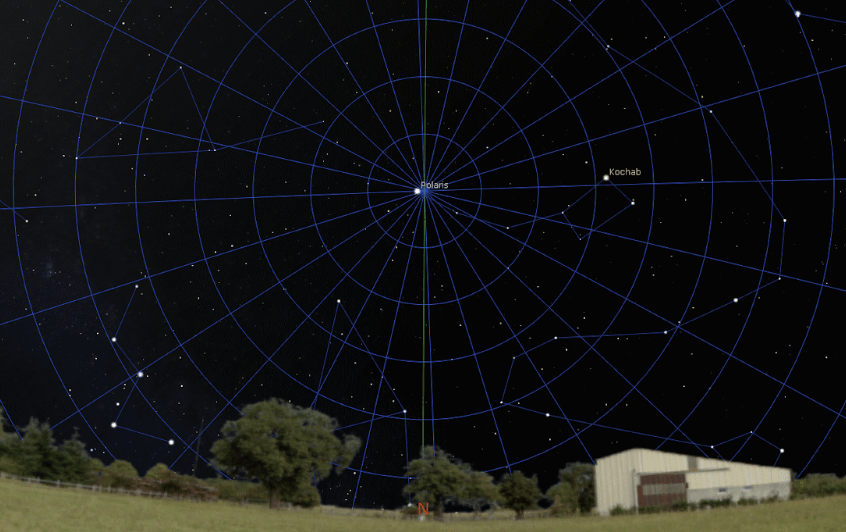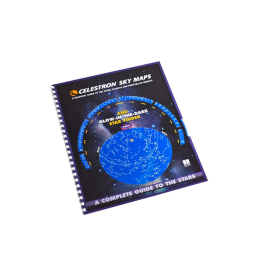
The Celestial objects we see in the sky appear to be located on the surface of a great sphere of immense diameter, with us at the center. This is called “the Celestial Sphere”. Understanding the Celestial Sphere is critical to understanding why, for example, an equatorial mount is needed for astrophotography. It’s also important to understand the north celestial pole, the observer's “meridian”, and other such concepts. This article will directly address some fundamental concepts of the Celestial Sphere to help you observe the night sky with a greater understanding.
Getting Familiar with the Sky as a Sphere
Imagine yourself being contained within the exact center of a sphere. Now imagine half your view of this sphere being obscured by the horizon. This is exactly what we see in the night sky - half of our view of the celestial sphere is blocked by the observer’s horizon. Dotted on this sphere are the heavenly bodies we know: the Moon, the planets, the stars, the Milky Way, et cetera.
It’s helpful to visualize the sky as one great sphere that rotates around us, even though we’re living on the sphere. Imagine yourself looking straight up. The point in the sky that is directly above you is called your “zenith”. The point directly below you, straight down (which you can’t see since the earth is in the way) is called your “nadir”. Every observer on the Earth will have their own unique zenith and nadir, depending on where they are standing on the Earth and their local time.

Now imagine drawing an invisible line beginning due south and that passes directly above you at zenith. This line is referred to as the observer's “meridian”. This is the point in the sky where all objects reach their highest point on any given night. Astronomers might also refer to the celestial “equator”. This line refers to the Earth’s equator as projected onto the sky. This differs from the “ecliptic”, which is the line that all planets in our solar system follow.
Understanding the Celestial Poles
Now imagine yourself facing north. Visualize projecting the axis of this giant sphere’s rotation onto the night sky. This axis represents the North Celestial Pole elevated above the horizon. The Earth’s south pole also has a corresponding projection out to the Celestial Sphere, the South Celestial Pole. If you are in the northern hemisphere, you can’t see the South Celestial Pole. The Celestial Equator is halfway between the North and South celestial poles, an angle of exactly 90° from the celestial equator to either of the celestial poles. The north celestial pole can also be easily identified by finding the star Polaris. Interested in learning more about finding the North Celestial Pole and polar alignment? Check out our article on polar alignment!

Understanding the Celestial Coordinate Systems
There are two different celestial coordinate systems that are used by astronomers, the “Altitude and Azimuth” or “Alt-Az” and the “Right Ascension and Declination” (also called “Equatorial”) coordinate systems. Altitude and Azimuth coordinates are based on your local horizon and zenith. Or, more simply, azimuth can simply be thought of as “left-right” and altitude as “up-down”. Altitude and Azimuth coordinates are measured in angle units of degrees, minutes, and seconds of arc.
The more important celestial coordinate system is known as the Right Ascension and Declination Coordinate system (or “Equatorial” system). The Right Ascension coordinate units are not degrees, but in units of time, “hours, minutes and seconds''. Declination coordinate units are degrees. Right Ascension and Declination coordinates are similar to Earth’s longitude and latitude. Using Right Ascension and Declination you can look up the coordinates of a particular object in a reference book or on a computer, and know exactly where that object is in the sky. Unlike Altitude and Azimuth, this coordinate system does not change over the night.

Learn More
Interested in learning more about what's in the sky above us? Not sure where to begin? Check out our Astronomy Hub to learn more!













